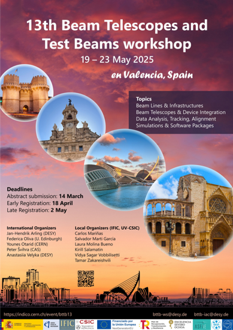Speaker
Description
The CMS experiment will be upgrading its detectors in lieu of higher luminosities and collision rates during the High-Luminosity era of the LHC (HL-LHC). One key upgrade of the CMS detector will be its end-cap calorimeters, which will be fitted with the new High Granularity Calorimeter (HGCAL). The Hadronic calorimeter is split into two sections using different technologies owing to the amount of radiation damage. The SiPM-on-Tile technology consists of small scintillator tiles that are read out by SiPMs (Silicon Photo-multiplier) on the PCB. The PCB without any scintillators on it is known as a tileboard. A tileboard will house 1 or 2 readout ASICs (called HGCROCs), and each HGCROC can read out 72 channels. To test and certify the 4000 boards and the functionality of the HGCROCs, a robust and highly automated quality control procedure is needed. The QC procedure also acts as the initial tuning of operating parameters. In March of 2025, a first set of 8 boards were tuned and assembled into a stainless steel absorber stack and tested with electrons of energy up to 6 GeV in the DESY II testbeam facilities for the first time. The test setup, procedure and results from the tuning will be reproted, and a first look into the analysis of the calorimetric performance will be presented.
